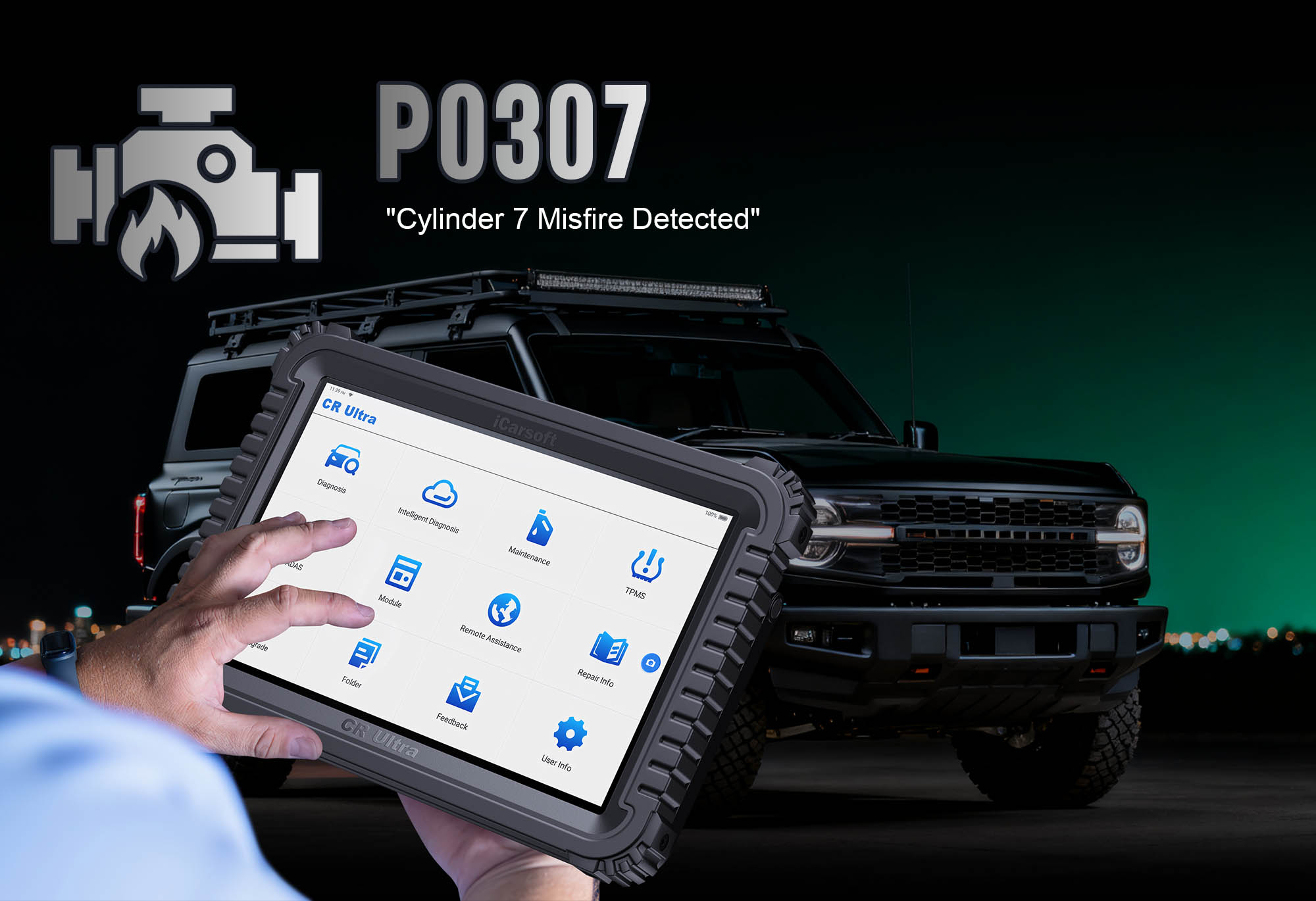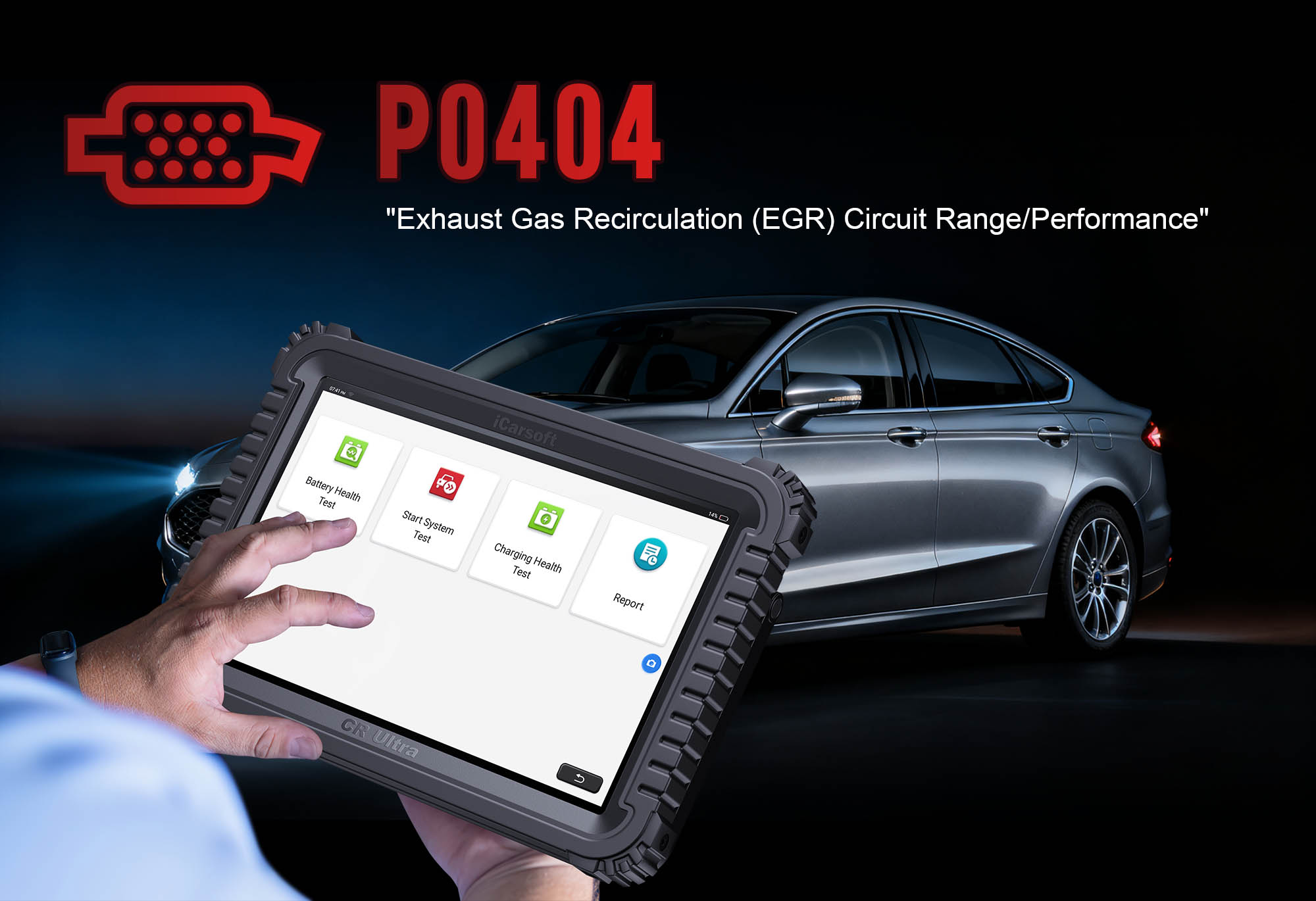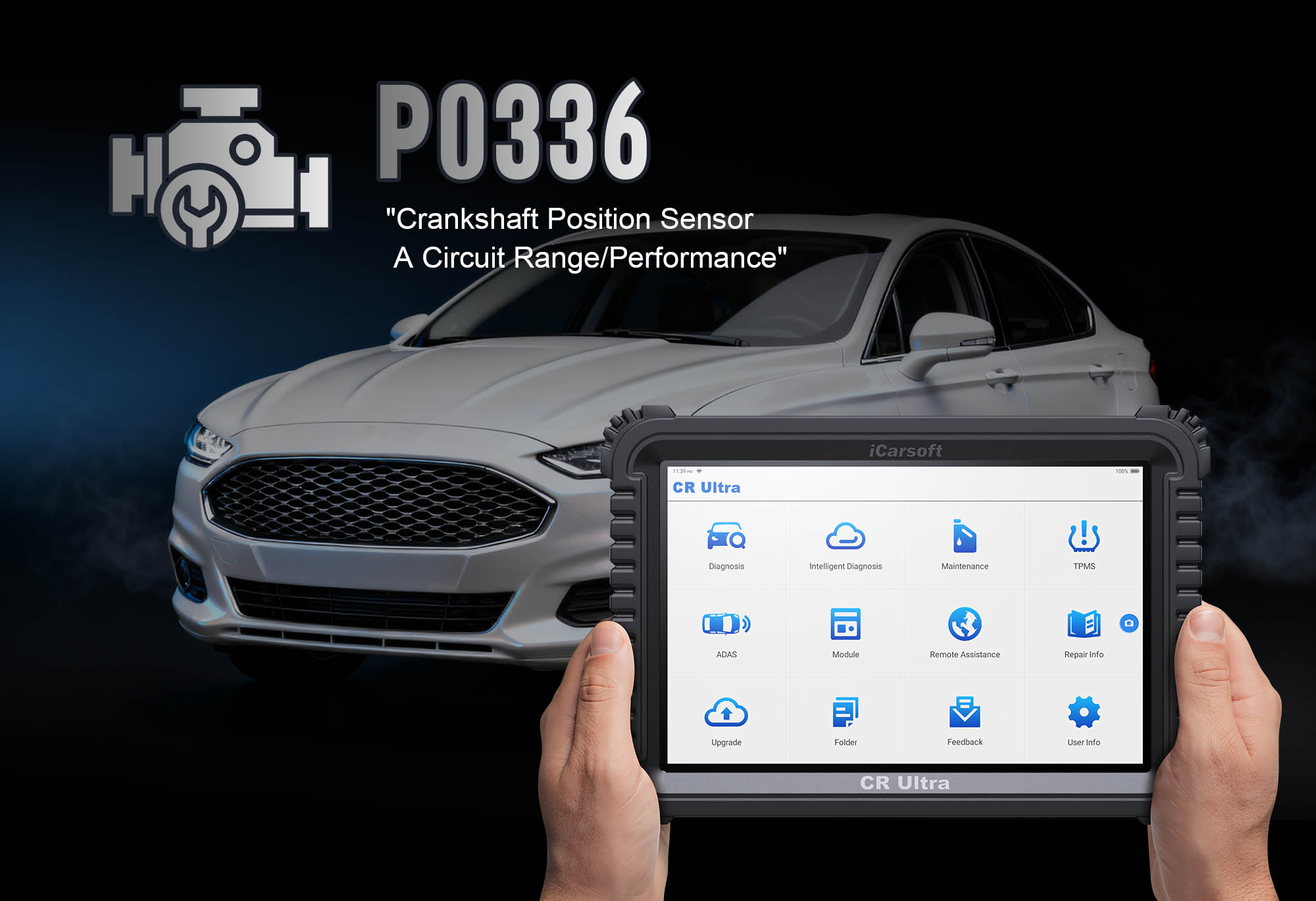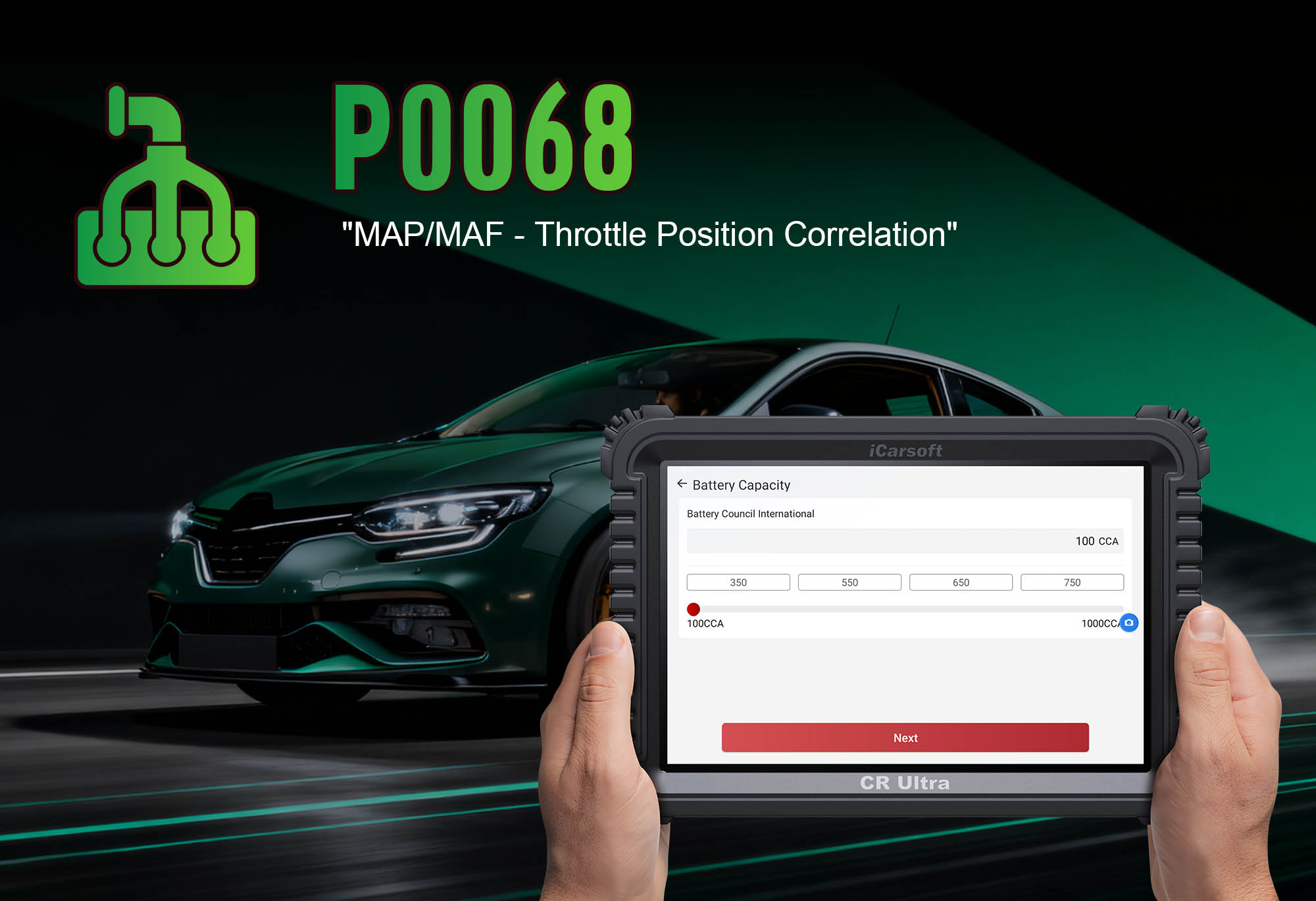Diagnose & Clear P0307 with iCarsoft CR Ultra: Fix Cylinder 7 Misfire Detected
If your check engine light flashes (a critical warning for engine damage risk) and you feel severe engine vibrations, reduced power, or hear a "sputtering" sound from the engine bay, a diagnostic scan will likely return P0307. This OBD-II code specifically indicates "Cylinder 7 Misfire Detected," meaning the Engine Control Module (ECM) has identified that the 7th cylinder is failing to combust fuel properly.
Combustion relies on three key components: adequate fuel delivery, strong spark, and proper cylinder compression. A misfire in Cylinder 7 disrupts this balance—unburned fuel enters the exhaust (risking catalytic converter damage) and robs the engine of power. Unlike general misfire codes (e.g., P0300), P0307 pinpoints the exact cylinder, narrowing the diagnostic focus—but pinpointing why it’s misfiring still requires precision tools.
Basic scanners may only confirm "Cylinder 7 misfire" but can’t test ignition coil functionality, fuel injector flow, or cylinder compression. The iCarsoft CR Ultra, with its specialized misfire analysis, bi-directional component tests, and live cylinder performance tracking, solves this. Below, we’ll break down how to diagnose and fix P0307 using this professional-grade tool.
 iCarsoft CR Ultra: Monitoring Cylinder 7 misfire counts and ignition coil performance
iCarsoft CR Ultra: Monitoring Cylinder 7 misfire counts and ignition coil performance
Understanding P0307: Causes & Key Symptoms
A misfire in Cylinder 7 creates distinct, often urgent performance issues—ignoring it can lead to costly engine damage (e.g., catalytic converter failure, valve damage). Below are the critical symptoms to act on and common causes to target.
Key Symptoms of P0307
-
Flashing Check Engine Light: Critical indicator—flashing means unburned fuel is overheating and damaging the catalytic converter. Stop driving immediately if this occurs.
-
Severe Engine Vibrations: Most noticeable at idle or low speeds; the engine may "shake" or "jitter" as Cylinder 7 fails to contribute power.
-
Reduced Power & Acceleration: The engine loses 1/8 of its power (in V8 engines) or a larger share in some configurations, leading to lag during highway merging or uphill driving.
-
Increased Fuel Consumption: The ECM compensates for the misfire by injecting more fuel, lowering MPG by 15–25%.
-
Strong Fuel Odor: Unburned fuel from Cylinder 7 exits the exhaust, creating a noticeable gasoline smell (more pronounced during acceleration).
-
Rough Idle or Stalling: At idle, the misfire may cause RPM to fluctuate (e.g., 500–900 RPM) or the engine to shut off entirely—worse in cold weather.
Common Causes of P0307
-
Faulty Ignition Coil or Spark Plug: The #1 cause—worn spark plugs (fouled, cracked electrodes) or a failed ignition coil for Cylinder 7 prevent proper spark, halting combustion.
-
Clogged or Leaking Fuel Injector: A blocked injector restricts fuel flow to Cylinder 7 (lean misfire); a leaking injector floods it (rich misfire)—both disrupt combustion.
-
Low Cylinder Compression: Worn piston rings, damaged intake/exhaust valves, or a blown head gasket reduce compression in Cylinder 7—fuel can’t ignite without sufficient pressure.
-
Vacuum Leaks: Unmetered air entering the intake manifold near Cylinder 7’s intake valve creates an overly lean mixture that won’t ignite.
-
Wiring Issues: Damaged wires to Cylinder 7’s ignition coil or fuel injector disrupt power/signals—components don’t receive commands to operate.
-
EGR Valve Malfunction: A stuck-open EGR valve recirculates excessive exhaust gas into Cylinder 7, diluting the air-fuel mixture and preventing combustion.
Why iCarsoft CR Ultra Excels at Diagnosing P0307
The CR Ultra outperforms basic tools with features tailored to single-cylinder misfire diagnostics—critical for resolving P0307 without wasting time on unrelated components.
Cylinder-by-Cylinder Misfire Tracking
Displays real-time misfire counts for each cylinder (e.g., "Cylinder 7: 12 misfires/minute; Others: 0") to confirm the issue is isolated. Logs data over time to catch intermittent misfires.
Bi-Directional Ignition Coil Testing
Sends power directly to Cylinder 7’s ignition coil to test spark strength. Use a spark tester to verify blue, consistent spark—eliminates guesswork about coil functionality.
Fuel Injector Flow Tests
Commands Cylinder 7’s injector to open/close, measuring fuel flow rate (normal = 20–30 mL/minute). Detects clogs (low flow) or leaks (high flow) with precision.
Compression Test Integration
Works with compatible pressure gauges to log Cylinder 7’s compression (normal = 100–200 psi) and compare it to other cylinders. Identifies mechanical issues (e.g., "Cylinder 7: 60 psi < 150 psi (Cyl 8) = low compression").
3D Engine Component Mapping
Shows high-resolution diagrams of Cylinder 7’s location, ignition coil, fuel injector, and wiring path for 200+ vehicle brands (e.g., "Ford F-150 V8: Cylinder 7 = Driver-Side, Rear"). Avoids costly cylinder misidentification.
Live Data Correlation
Cross-references Cylinder 7’s performance with fuel trim, ignition timing, and injector pulse width. For example: "Low injector pulse width + lean trim = clogged injector; No coil current = wiring fault."
Step-by-Step: Diagnose P0307 with iCarsoft CR Ultra
-
Connect & Confirm the Code (Prioritize Safety First)
If the check engine light is flashing, stop driving immediately—unburned fuel is damaging the catalytic converter. Tow the vehicle to a safe location if needed.
Plug the CR Ultra into your vehicle’s OBD-II port (use included adaptors for older models with non-standard ports). Power on the tool and select your vehicle via Auto VIN Scan (instantly pulls make/model/engine specs) or manual entry (make/model/year/engine).
Navigate to Engine > Fault Codes > Read Codes to confirm P0307. Tap Code Details for vehicle-specific insights—e.g., "Chevrolet Silverado V8: Cylinder 7 Misfire; Check Ignition Coil (Location: Passenger-Side, 3rd from Front) & Spark Plug."
-
Locate Cylinder 7 & Related Components
Use the CR Ultra’s 3D mapping to avoid misidentifying Cylinder 7 (critical—mixing up cylinders wastes time and risks incorrect repairs):
-
Go to Component Location > Engine > Cylinder Layout > [Your Engine Type] (e.g., "V8, LS-Series," "V10, Power Stroke").
-
The tool displays a 3D diagram highlighting:
-
Cylinder 7: Exact position (varies by engine):
-
V8 Engines: Often on the passenger side (rear) for GM/LS; driver side (rear) for Ford Modular engines.
-
Inline-6/8 Engines: Near the firewall (rearmost cylinder).
-
Ignition Coil (Cylinder 7): Mounted directly on the spark plug (coil-on-plug design) or connected via a spark plug wire.
-
Fuel Injector (Cylinder 7): Attached to the intake manifold, with a wiring connector and fuel line.
-
Wiring Harness: Path from the ECM to the coil and injector (check for damage near hot components like the exhaust manifold).
-
Analyze Live Misfire Data & Isolate the Issue
Real-time data confirms the misfire is isolated to Cylinder 7 and hints at the root cause—follow these steps:
-
Start the engine (idle only—no driving) and let it reach operating temperature (5–10 minutes).
-
In the CR Ultra, go to Engine > Live Data > Misfire Analysis > Cylinder-by-Cylinder and monitor four key parameters:
-
Misfire Count (Cylinder 7): Normal = 0. Counts >5/minute confirm the misfire; counts >20/minute = severe issue.
-
Ignition Coil Current (Cylinder 7): Normal = 5–8A during spark. 0A = failed coil or wiring fault.
-
Injector Pulse Width (Cylinder 7): Normal = 1–3ms at idle. Longer pulses (+4ms) = ECM compensating for lean misfire; shorter pulses (<1ms) = clogged injector.
-
Fuel Trim (Bank 2, if applicable): Positive values (+10% to +20%) = lean condition (vacuum leak, clogged injector); negative values (-10% to -20%) = rich condition (leaking injector).
-
Test Ignition Coil & Spark Plug (Top Cause of P0307)
A faulty ignition coil or spark plug causes ~70% of P0307 cases—verify with the CR Ultra:
-
Ignition Coil Bi-Directional Test:
-
Ensure the engine is off. Disconnect Cylinder 7’s ignition coil connector.
-
Navigate to Special Functions > Engine > Ignition Tests > Cylinder 7 Coil Activation.
-
Connect a spark tester between the coil and spark plug wire (or directly to the coil for coil-on-plug designs).
-
Start the test—the tool sends a power signal to the coil. A strong, blue spark = functional coil; no spark = replace coil.
-
Spark Plug Inspection:
-
Locate Cylinder 7’s spark plug (use the CR Ultra’s 3D map) and remove it with a spark plug socket.
-
Inspect for common issues:
-
Fouling: Black, oily deposits = oil leakage into the cylinder (check piston rings or valve seals).
-
Cracks/Wear: Damaged electrodes or insulator = replace the plug (use the tool’s Spark Plug Guide for correct heat range).
-
Gap Issues: Incorrect gap (>0.060") = adjust or replace.
-
Diagnose Fuel Injector Functionality
If ignition components are healthy, test Cylinder 7’s fuel injector for clogs or leaks:
-
Injector Flow Test:
-
Move the vehicle to a well-ventilated area and place a catch pan under Cylinder 7’s injector.
-
Navigate to Special Functions > Engine > Fuel Injector Tests > Cylinder 7 Flow Rate.
-
Start the test—the CR Ultra commands the injector to spray fuel for 10 seconds. Measure the collected fuel and compare to manufacturer specs (normal = 20–30 mL/10s).
-
Low flow (<15 mL/10s) = clogged injector (clean with ultrasonic injector cleaner).
-
High flow (>35 mL/10s) = leaking injector (replace with OEM part).
-
Injector Pulse Test: Run Special Functions > Engine > Fuel Injector Tests > Cylinder 7 Pulse Test to verify the ECM sends correct signals. Erratic pulses (e.g., no pulse, inconsistent duration) = wiring or ECM fault.
-
Check Cylinder Compression & Vacuum Leaks
Mechanical issues (low compression) or air leaks often cause persistent misfires—diagnose with the CR Ultra:
-
Compression Test:
-
Remove Cylinder 7’s spark plug and disable the fuel system (use Special Functions > Engine > Fuel System > Disable Fuel Pump).
-
Connect a compression gauge to Cylinder 7’s spark plug hole.
-
Navigate to Special Functions > Engine > Compression Test > Log Data and crank the engine for 5 seconds.
-
Normal compression = 100–200 psi. A reading 20% lower than other cylinders (e.g., Cyl 7: 60 psi vs. Cyl 8: 150 psi) = mechanical issue (worn rings, damaged valves)—consult a mechanic for repairs.
-
Vacuum Leak Detection:
-
Go to Special Functions > Engine > Intake Tests > Smoke Test.
-
Connect a smoke machine to the intake manifold (use the tool’s guide to locate the test port—often the PCV valve or brake booster port).
-
Start the smoke flow—leaks near Cylinder 7’s intake valve will release smoke. Check for:
-
Cracked vacuum hoses or loose intake manifold gaskets.
-
Damaged throttle body gasket or intake manifold seals.
-
Repair leaks with new hoses or gaskets (use high-temperature sealant for minor gaps).
-
Repair & Clear P0307
Fix the root cause based on diagnostic findings (prioritize high-probability issues first):
-
Replace Cylinder 7’s ignition coil and spark plug (use OEM parts—check the CR Ultra’s Part Lookup for vehicle-specific compatibility).
-
Clean a clogged fuel injector with ultrasonic cleaner; replace a leaking injector.
-
Repair low compression: Address piston ring wear (engine rebuild) or damaged valves (valve job)—this requires professional mechanical work.
-
Fix vacuum leaks with new hoses, intake manifold gaskets, or throttle body gaskets.
-
Repair wiring faults: Replace damaged wires to the coil/injector; use heat-shrink connectors for wires near hot components (exhaust manifold).
-
Clear the Code: In the CR Ultra, go to Engine > Fault Codes > Clear Codes to delete P0307. Note: The ECM may require 2–3 drive cycles to confirm the fix.
-
Validate the Repair (Critical for Safety)
Confirm Cylinder 7 is functioning properly and no residual damage remains:
-
Recheck live data—misfire count for Cylinder 7 should be 0, and ignition/injector values should match manufacturer specs.
-
Test drive for 30–40 minutes, including:
-
Idle stability (500–800 RPM, no fluctuations).
-
Highway acceleration (60–70 mph, no lag or vibrations).
-
Cold restart (turn off engine, wait 10 minutes, restart—no rough running).
-
Use the CR Ultra’s Misfire Verification Test (under "Special Functions") to run a 10-minute stress test (varies RPM and load). No misfires = successful repair.
-
If the check engine light was flashing, inspect the catalytic converter with Special Functions > Engine > Emissions Tests > Catalytic Converter Efficiency to ensure it wasn’t damaged.
Preventing P0307 Recurrence
The CR Ultra helps maintain Cylinder 7 (and all cylinders) health to avoid future misfires. Use these proactive features:
-
Ignition System Maintenance: Set the tool’s Service Reminder to replace spark plugs every 60,000–100,000 miles and ignition coils every 150,000 miles (preventive replacement for high-mileage vehicles).
-
Fuel System Care: Use the CR Ultra’s Fuel Injector Health Check quarterly to detect early clogs. Add fuel system cleaner every 5,000 miles to keep injectors clean and prevent deposits.
-
Compression Monitoring: Include the Cylinder Compression Log in annual tune-ups to track compression trends. Catch wear (e.g., "Cylinder 7 compression down 10 psi year-over-year") before it causes misfires.
-
Regular Scans: Run the CR Ultra’s Quick Scan monthly to monitor misfire counts and ignition/fuel system data. Address minor issues (e.g., weak coil current) before they trigger P0307.
Conclusion: Precision for Urgent Misfire Faults
P0307’s Cylinder 7 misfire is not just a performance issue—it’s an urgent warning of potential catalytic converter or engine damage. Basic scanners leave you guessing, but the iCarsoft CR Ultra turns uncertainty into precision: it isolates the root cause (coil, injector, compression) with targeted tests, avoids costly misrepairs, and ensures you fix the problem right the first time.
For DIYers, this tool eliminates the fear of "what if"—you’ll know exactly whether to replace a $50 spark plug or call a mechanic for compression repairs. For professionals, it streamlines diagnostics and builds customer trust by resolving misfires quickly. With the CR Ultra, tackling P0307 means protecting your vehicle’s critical components and restoring reliable, safe performance—mile after mile.

 iCarsoft CR Ultra: Monitoring Cylinder 7 misfire counts and ignition coil performance
iCarsoft CR Ultra: Monitoring Cylinder 7 misfire counts and ignition coil performance



